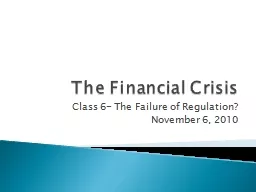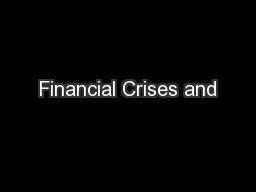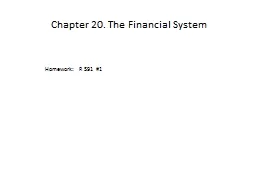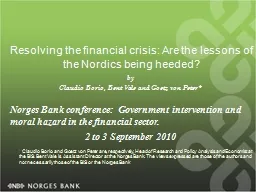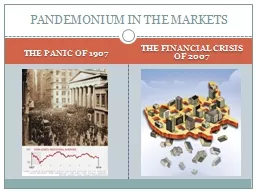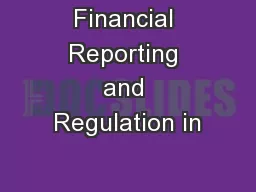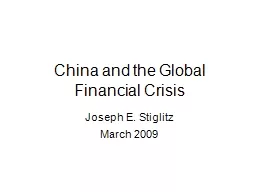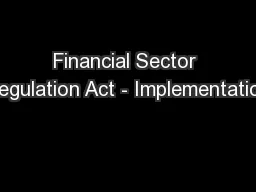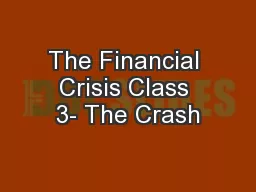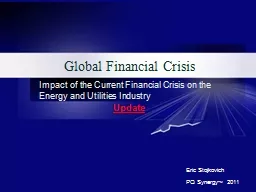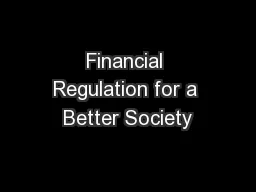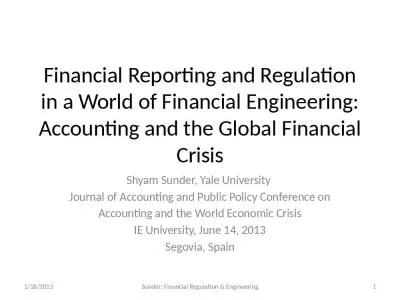PPT-The Financial Crisis Class 6- The Failure of Regulation?
Author : celsa-spraggs | Published Date : 2018-12-23
November 6 2010 We talked about the economic side of things Macro The housing bubble the stock market crash and govt response Micro What derivatives are and the
Presentation Embed Code
Download Presentation
Download Presentation The PPT/PDF document "The Financial Crisis Class 6- The Failur..." is the property of its rightful owner. Permission is granted to download and print the materials on this website for personal, non-commercial use only, and to display it on your personal computer provided you do not modify the materials and that you retain all copyright notices contained in the materials. By downloading content from our website, you accept the terms of this agreement.
The Financial Crisis Class 6- The Failure of Regulation?: Transcript
Download Rules Of Document
"The Financial Crisis Class 6- The Failure of Regulation?"The content belongs to its owner. You may download and print it for personal use, without modification, and keep all copyright notices. By downloading, you agree to these terms.
Related Documents

